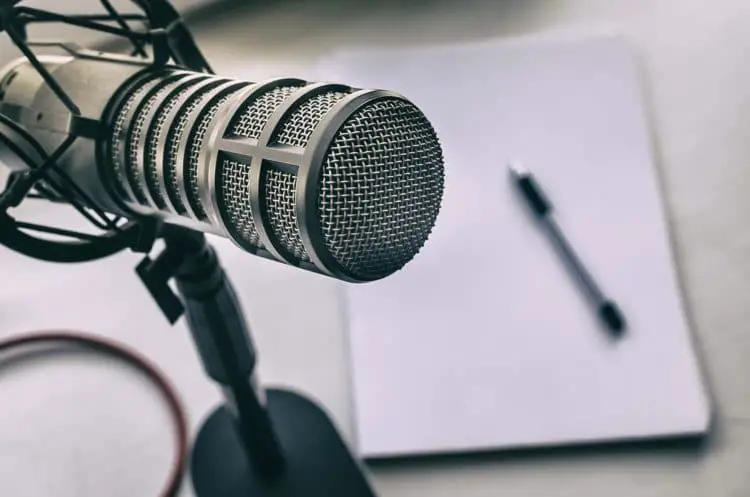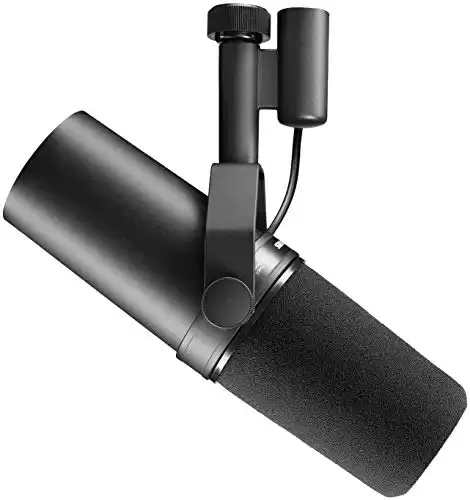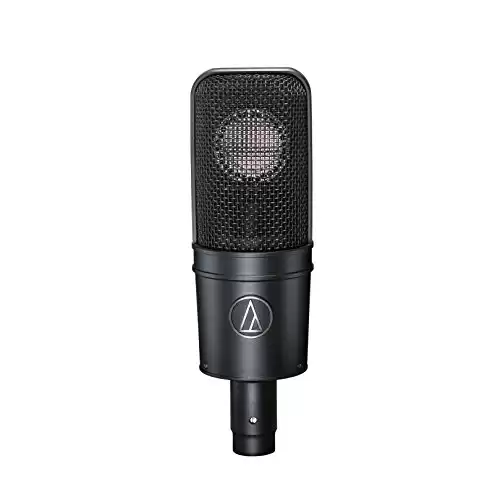When you set up a microphone for vocals or instruments, the audio created can route through a sound system to create something enjoyable for the entire audience.
A similar experience happens when TV personalities, professional athletes, or movie actors perform in front of the camera.
In the English language, it is common for people to shorten long words as a slang methodology. When someone describes a microphone, they typically call it a “mike.”
When writing this abbreviation, some writers use “mic” instead because it provides a more accurate abbreviation of “microphone.”
Micing or Miking: What Is Better?
“Mic” and “mike” are both acceptable abbreviations for “microphone.” Using participles with these shortened descriptors becomes problematic because the words become “micing” or “miking.” The correct term is “mic up” or “mike up,” but “miking” is a usable option.
The problem with “micing” is that there is no way to understand that the “c” in the word has a hard tone to it. When you read it outside of context, it sounds closer to “mice.”
That’s why some writers use an apostrophe if they insist on using “mic” as an abbreviation for a microphone. They would say that the person was “mic’ing” the instrument.
Once you use the apostrophe, you’re indicating to the reader that letters between the words are eliminated. It becomes a contraction.
That process virtually eliminates the idea that slang is getting used by the speaker, creating even more confusion from a reader’s view.
Since the microphone input on most gear is also indicated by capital letters (“MIC”), the issue becomes even more confusing when there isn’t enough context to provide the correct pronunciation.
Unless you know something about music, the average reader would see “mic” and pronounce it like “mick.”
That’s why “mike” and “miking” are the grammatically preferred ways to describe your microphone setup.
If you want to avoid confusion between a fellow named Mike and a microphone, it might be better to use “mic’ing” to describe this function since it is the closest description.
How to Find a Good Microphone for Your Gear
Once you’ve settled on the “micing” or “miking” debate, it’s time to find the right equipment to work with your gear. Although a microphone’s price is often reflective of its quality, you’ll find numerous mid-range options that provide a capable performance.
It’s not unusual for the mid-range microphones to copy what the premium versions use without charging the higher prices.
When you know how different microphones function and have an idea of user intent, it’s much easier to equip your performance for recording, live shows, or whatever other need you have.
■ Understanding the Specs of the Modern Microphone
If you know the terminology and specifications of modern microphones, it becomes much easier to choose the correct product for your needs.
When you start reading microphone descriptions, these terms and specs are the ones you’ll see most often.
| Polar Patterns: | This term describes the microphone’s sensitivity field, which is the area where the sound gets ignored or accepted. If you have an omnidirectional mic, it accepts audio inputs from all directions, whereas a bi-directional model only takes east-west sounds. Unidirectional models (which hear audio from one direction) come in cardioid, super-cardioid, or hyper-cardioid models. |
| Multi-Pattern: | Some mics provide a multi-pattern design that you can use. This feature means the polar patterns are changeable by using switches or capsules to pick up different sounds. It’s an option that increases the equipment’s versatility. |
| Frequency Response: | This term refers to the microphone’s frequency range that it picks up. You’ll see the measurement offered in the product specs from the lowest to the highest, and it’s always provided in Hertz. When you want to mic up your vocals, a 60 Hz to 15 kHz range will work well. When you need to put a microphone on a bass drum, you’d want a product that can reach 30 Hz on the low end. |
| Response Curves: | All microphones start at zero on the lowest end of responsiveness and return to that level at the high end. What happens between those extremes is described by this term. You’ll see different dips and peaks to show how some models are better for higher frequencies or lower tones. |
| SPL Handling: | SPL refers to “Sound Pressure Level.” The specs offer this rating in decibels, often abbreviated as dB. It reflects the maximum volume that the mic handles, which is critical knowledge if you’re recording an instrument. The average product can handle 100 dB, but a drum kit might need something rated at 130 dB. |
| Proximity Effect: | Although this term isn’t usually incorporated into a microphone’s spec sheet, it’s still a characteristic to review. When closer miking can bring out more bass tones, an audio engineer might rely on this capability to enhance the recording or performance. Singers and instrumentalists can “work their mic” to create different sounds using this feature. |
| Sensitivity: | This rating refers to the quietness of sounds that the equipment detects. It’s expressed through different systems based on the manufacturer’s preferences. All ratings start with a lower number for comparison, allowing you to compare mic sensitivity for the audio sources you want to produce. |
Types and Applications of the Modern Microphone
Microphones typically fall into two categories: condenser or dynamic. Each one has several crucial differences worth reviewing to ensure you purchase the correct one for your needs.
- Unidirectional Cardioid Polar Pattern
- XLR Connector Type
- 50 Hz - 20 kHz
- Impedance: 150 ohms
- XLR Connector
- More Reduced Electromagnetic Hum
- No Mechanical Noise Transmission
- Excellent Pop Filter
Dynamic microphones are typically more rugged, which makes them usable in virtually any setting or situation.
- Cardioid Polar Pattern
- XLR Connector Type
- Frequency Response: 20 Hz - 20 kHz
- Impedance: 100 ohms
- Open Circuit Sensitivity: -32 dB (25.1 mV) re 1V at 1 Pa
- Maximum Input Sound Level: 145 dB SPL, 1 kHz at 1% T.H.D.; 155 dB SPL, with 10 dB pad (nominal)
- Dynamic Range: 133 dB, 1 kHz at Max SPL
- Signal-to-Noise Ratio: 82 dB, 1 kHz at 1 Pa
- Phantom Power Requirements: 48V DC, 4.2 mA typical
- Switches: Flat, roll-off; 10 dB pad (nominal)
Condenser mics are generally more sensitive, making it better to keep them in the studio only for recording needs.
Musicians can use both types in any setting for whatever purpose they prefer.
It all depends on the manufacturing quality, overall craftsmanship, and maintenance work that the microphones receive.
Power requirements are another consideration to review. A dynamic microphone doesn’t need a power source to operate.
When you use condenser models, you’ll need a phantom supply or a battery for the product to function.
- Electrodynamic Pressure Gradient
- Figure-8 Polar Pattern
- 2.5-Micron Aluminum Ribbon as Generating Element
- Frequency Response 30 Hz -15 kHz +/- 3dB
- SPL >135dB @ 20 Hz
- No Active Internal Electronics
- Unaffected by Heat and Humidity
- Measurements in inches: 6.13" L, 1" W
- Measurements in mm 8mm L, 25mm W
- Weight: 244g / 8.60 ounces
■ What about Using Ribbon Microphones?
Ribbon microphones work on the same principles of the dynamic design, which is why they’re typically included in that category.
The primary difference in the ribbon vs. dynamic mic debate is that the former option uses a thin ribbon instead of a diaphragm. That equipment vibrates to vary voltage as it transmits the audio signal to whatever source you prefer.
It’s not unusual to see ribbon microphones in the studio because they deliver warmth and authentic sound to most recorded materials.
If you want to find the best ribbon mics available today, you’ll want to shop with brands like AEA Microphones, Royer Labs, or Beyerdynamic.
You Can Also Select Instrument-Specific Microphones
When you need to start miking instruments for recording or a live performance, you’ve got several options to use with today’s modern equipment.
- Percussion Microphones. Each cymbal and drum create a unique sound. That means you’ll want something specific for each one to pick up the different audio frequencies a percussionist produces. The best options in this category offer a rapid attack with precision condensing to limit feedback. Most are sold in multi-packs to save some money.
- Woodwind and String Microphones. These microphones are typically lighter and smaller so that they can attach to the instrument’s body or bell. This feature allows them to provide better volume consistency as the musician moves. Clip-on models are available for cellos, violas, and similar strings.
- Harmonica Microphones. Sometimes called “bullet mics,” this product offers a shorter, rounded casing that cups into the musician’s hand as they plan. It uses a crystal diaphragm to produce a somewhat distorted sound.
If you play a brass instrument, a standard vocalist microphone is often usable to avoid the cost of purchasing something specific.
When you need more flexibility during a live performance, you can choose wireless microphones from these options. This product includes a transmitter that sends a signal to a receiver.
The receiver connects the microphone to the PA system or a mixer by using radio frequencies. Most mics use VHF, UHF, or digital today.
Cheaper products typically stick with UHF, which means you can sometimes have interference issues with a low-quality system.
You’d want to install your sound equipment away from fluorescent lights, wireless phones, and radios to eliminate static or interruption problems.
Wireless microphone frequencies for the transmitter and receiver must match.
It’s not an issue when purchasing a system, but anyone buying those items independently could turn it into a problem.
Do You Prefer Micing or Miking?
When you start using microphones for singing, playing an instrument, podcasting, or other needs, it is ultimately up to you to determine what description to use.
If you prefer “micing,” it’s okay to use that term. It’s in the dictionary!
When you prefer to use something a little more grammatically acceptable, you’d want to use “miking” instead.
If someone gives you grief about using a “k,” just refer to the German spelling “Mikrofon” and let them think about that option for a while!





